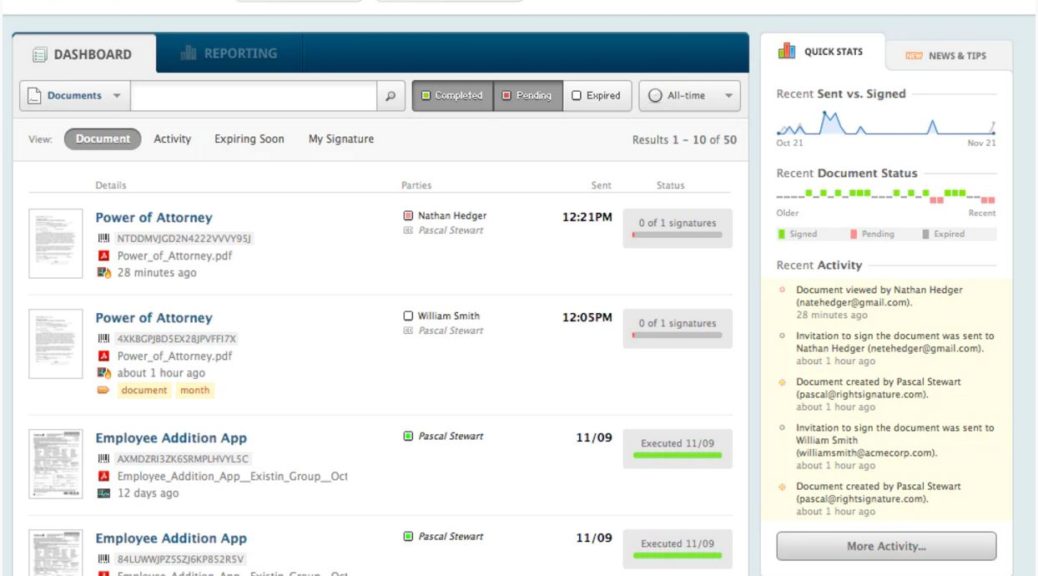When assessing the two solutions, reviewers found DocuSign easier to use. However, RightSignature is easier to set up and administer.
RightSignature Solution for Your Business
To keep users happy, an enterprise-grade file syncing and sharing solution must offer consumer-grade usability and ease of use to match or surpass custom services such as rightsignature vs docusign. The solution should ensure that syncing and sharing files from any device is easy and secure, and the ability to share data internally and externally, regardless of file size or network location. To maximize mobile performance, your solution must provide integrated applications, such as a built-in content editor, to help you do more in one seamless environment. Secure offline access and editing capabilities go a long way in ensuring a seamless experience for employees on the move.
RightSignature vs Docusign is often associated with mobile devices, but this is only part of the picture. To be productive anywhere in any scenario, employees must have access to the same EFSS functionality on any device – not just tablets and smartphones, but also laptops, desktops, and thin clients. This access from any device should be through an integrated enterprise mobility management (EMM) solution that allows IT to consistently enforce and distribute access and security policies through a single point of administration, regardless of the number of people accessing the service:
- Not only does RightSignature not give you the freedom to choose where you store it, but it also doesn’t even allow you to store your data locally.
- There is no possibility of integration with existing infrastructure and access from mobile devices to network resources within the organization and DocuSign.
- IT departments cannot control or choose where to store data to meet data independence, performance, cost, or security requirements.
The Main Alternatives of DocuSign
There are enough reasons for the popularity of DocuSign. DocuSign is one of the most widely used electronic signature services. This particular service has a rather rich history and is known for the reliable service they offer. However, that shouldn’t stop you from looking for better alternatives to DocuSign. The truth is, there are better e-signature services out there with more options and more affordable prices.
As we know, there is no shortage of people looking for alternatives to DocuSign. This article is written with a focus on those looking for better alternatives to DocuSign. If you fall into this category, this is the article you should read about. We intend to cover several alternatives to DocuSign in this article. You can browse this list and choose the best option that suits your goals. Strong security is a critical characteristic of an EFSS solution from an IT perspective, as it reduces the risk of information leakage and protects against disasters.
The number of DocuSign locations that users’ file-sharing services can access is generally limited, so the most important files are often inaccessible to users outside of the corporate network. Some organizations are trying to solve this problem by moving data to a more accessible location, but the disadvantages of this approach in terms of efficiency and scalability are obvious. The DocuSign solution must provide access to corporate data regardless of its location, including existing online file storage, and corporate content management systems, even outside the network, providing a single point of access to all data sources. Control of data exchange within the organization and outside it, including a mandatory login with a password of a certain level of complexity for each user account, limiting the available number of downloads for a given user.

